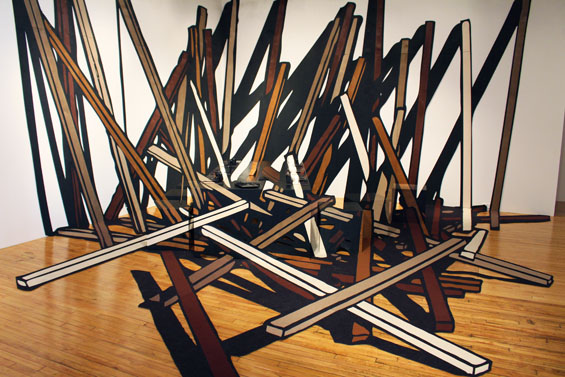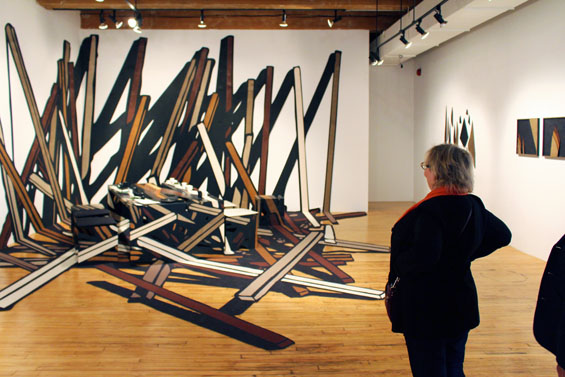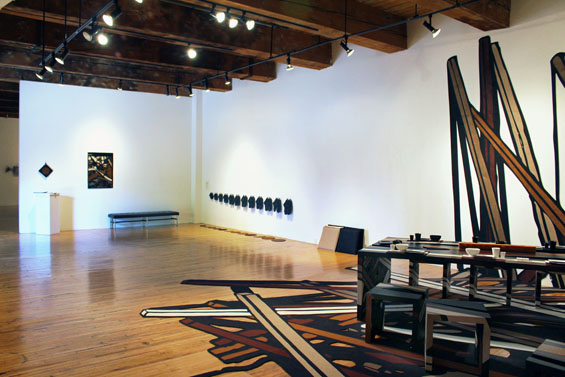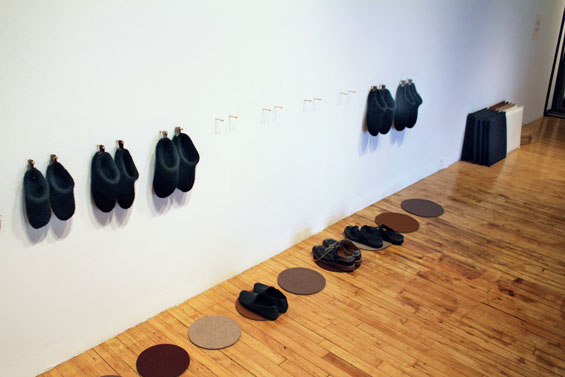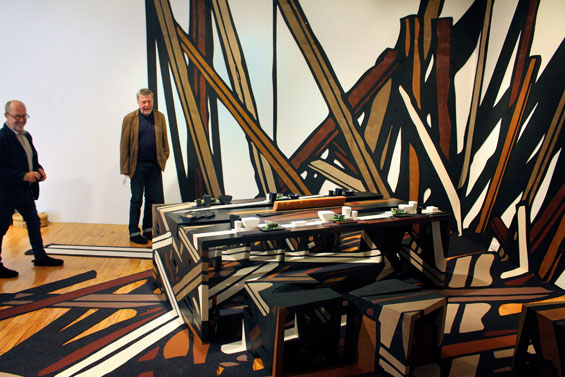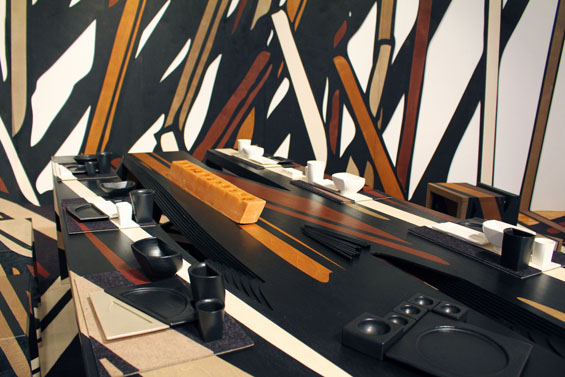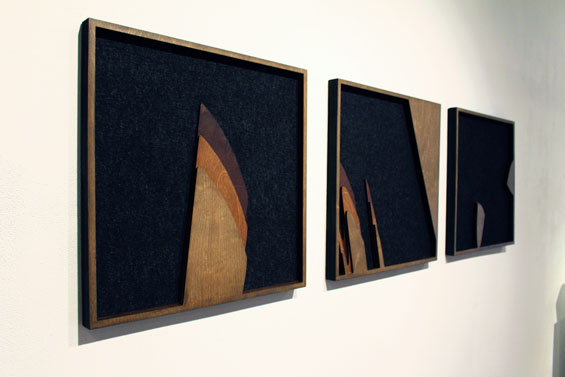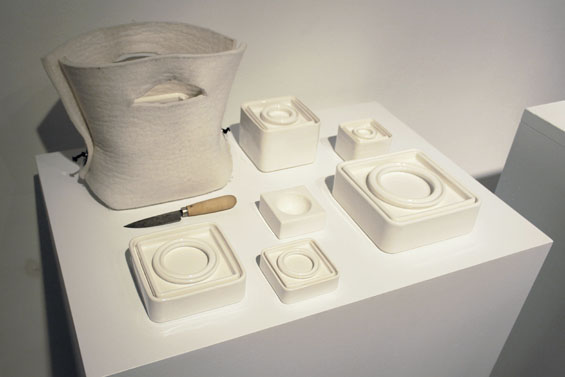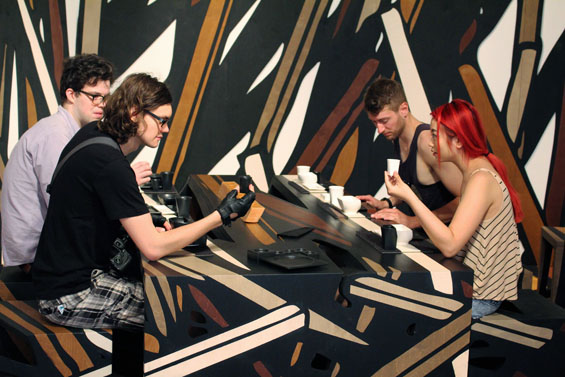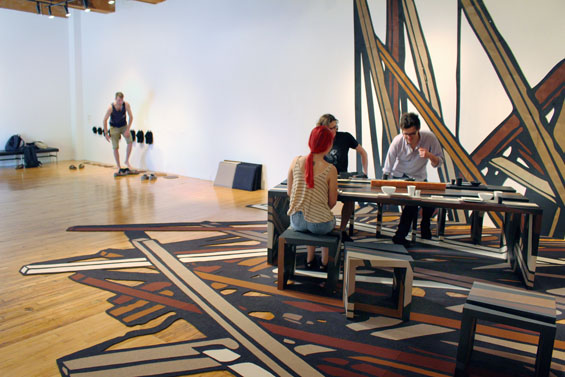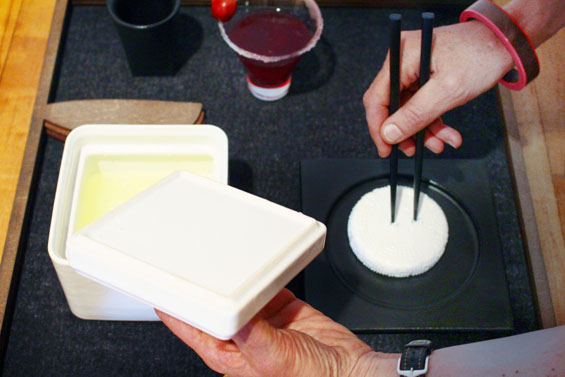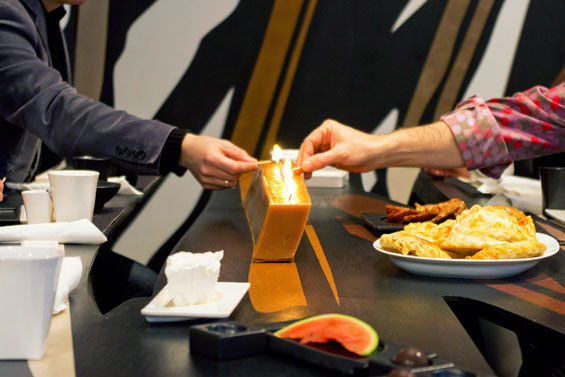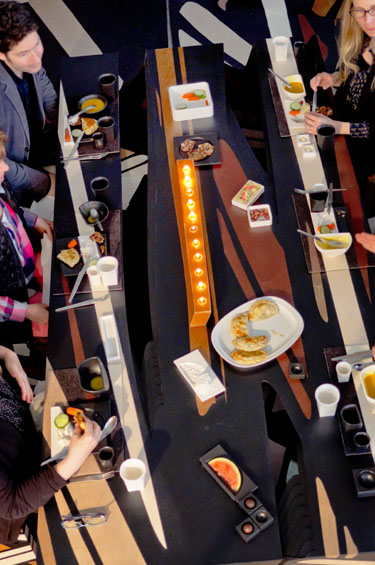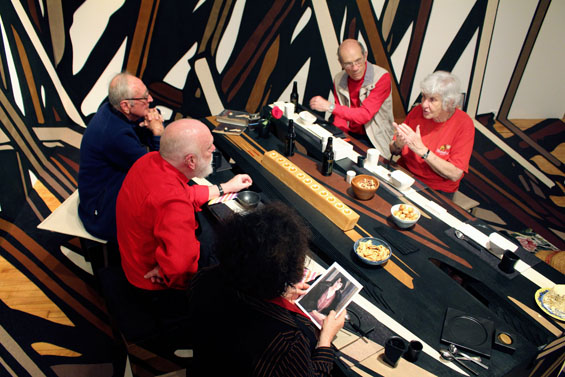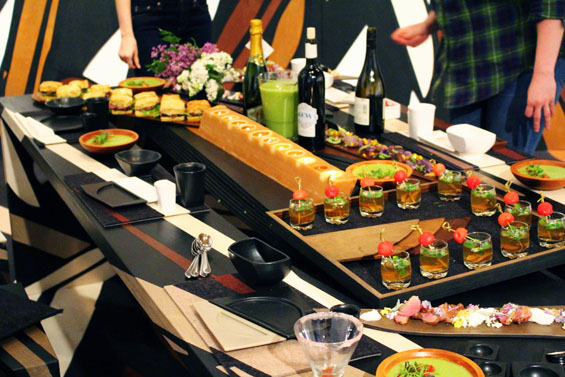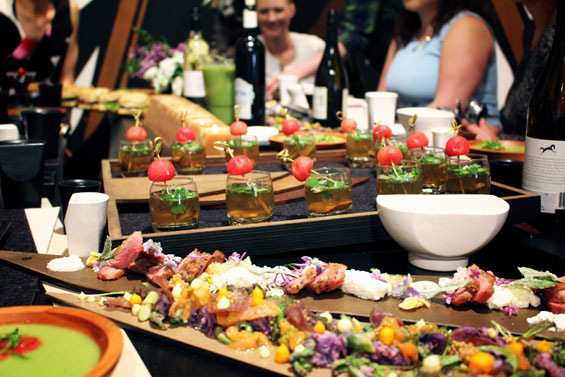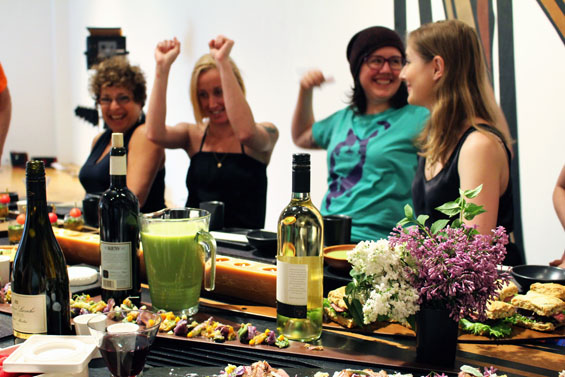Lost in the Wood, 2014
Multi-media installation in collaboration with Toronto architect Nathanael Gray
Laser-cut and laser-etched Baltic birch plywood, wood stain, felt, 3-D printed ceramic, wool, beeswax; dimensions variable
Lost in the Wood is both a sculpture and functional dining space for intimate gatherings of six people. It is an immersive, participatory environment that acts as a completely unique and extraordinary meeting place, engaging with those occupying the work in a sensual and tactile way. It is a platform for communication, celebration and inspiration.
Lost in the Wood was fabricated in 2014 by Clark Espinal with technical assistance from Nathanael Gray. It is constructed primarily of hand-cut industrial felt, laser-cut birch plywood and 3-D printed food-safe ceramic. All components are carefully designed to integrate into a connected whole that can be read as an image from a singular vantage point. Supporting components such as serving platters and trays are produced from off-cuts of the primary production. Participants are encouraged to wear the felted clogs provided when entering the work.
Lost in the Wood is a living art work that can be programmed in various ways to encourage its occupation. In some instances those occupying the piece have brought pre-prepared foods of their own choosing. In other cases chefs have been given the opportunity to create meals that reflect the intent of a particular group gathering. Past occupations have varied widely in levels of involvement and scope.
For example, Lost in the Wood has become an ongoing site of investigation for Lauren Cullen, an artist, critical craft researcher and facilitator.
As part of her PhD research, Lauren began employing Lost in the Wood as a workshop space to investigate settler colonial logic in the material culture of rug hooking. The workshops initiated the construction of a large-scale hooked rug. The design of the rug, based on the pattern of the tabletop, is hooked with scraps of felt left over from the production of the flooring. This collaborative investigation, and its facilitation through Lost in the Wood, continues.
